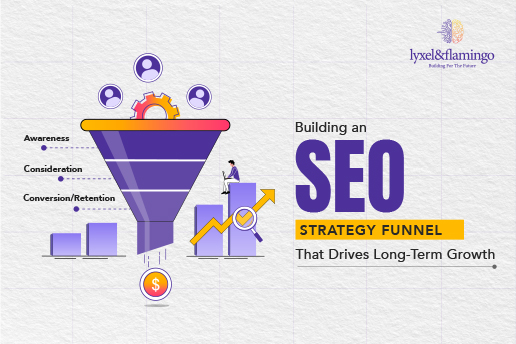Spam backlinks are known as the negative elements of SEO. One spam backlink can hamper the SEO potential of your site.
When multiple spam backlinks enter your website, It leads to affect your website ranking. Research shows that a business can lose its ranking because of spam links and can get Google penalization.
Thus, it is crucial to find a solution to prevent multiple spams at all costs. Spam Score is the right spam filtering software solution that helps to determine the spam email message.
This post will provide a brief understanding and guidance on spam scores. It will explain how spam scores work and tips to manage them to maximize your SEO potential.
A brief understanding of spam score
The spam score is a system designed by SEO data and software company Moz in 2015. It aims to determine whether the website is trustworthy or existing spam.
The spam score emphasizes the percentage of sites with related features. The machine learning model has been used in spam scores with 27 common features among many penalized sites in the data.
The low spam score refers to a score of 1%-30%. The medium spam score refers to a score of 31%-60%, and the high spam score refers to a score of 61%-100%.
The research team of MOZ defines that spam score consists of 17 spam flags. Each spam flag correlates to a particular spam indicator.
These spam flags help to identify whether the backlink is spam or not. You might feel it’s difficult to understand.
But don’t worry, keep reading to gain more in-depth knowledge.
Importance of spam score for SEO
The spam score requires more attention within the business context. This is because it offers two valuable SEO-related data. It includes the spam possibility of backlinks’ subdomains, and sometimes it gives only subdomains.
It is crucial to have these valuable and reliable SEO-related pieces of information to generate backlinks and design pages. As a result, it will help you to gain the top position in any search engine.
However, it is not applicable to all spam scores. It can offer you the framework to identify the spamminess of individual pages.
A spam score ensures that your website does not have any spam, and you don’t have any penalization by search engines.
The calculation of Moz Spam Score
The spam score helps to check the quality of a website by focusing on using 27 signals. After analyzing and observing many websites, specific features are identified that are common and similar in websites so that the Google platform can penalize them.
The Moz Spam Score uses advanced machine learning in terms of balancing its present domains with its components. It means that a total of 27 different flags exist in the Moz spam score.
It has been found that the spam score is high, with more flags. It provides similar spam specific to subdomains.
You should not be confused between a sub-directory and a sub-domain. A subdirectory refers to the way that it is present on your website, while a subdomain refers to an additional part of your current domain name.
For instance, www.computer.com/blog can be a subdirectory. On the other hand, blog.computer.com is referred to as a subdomain of www.computer.com.
What are the components of a Spam Score?
Many factors are associated with the spam score, so let’s check out those.
Low pages number
A website that has a low number of pages is known as spam for Moz. It does not mean you must have hundreds of pages on your site.
Lacking Doubleclick Ad Tag
A Double-click ad tag is helpful in managing online advertising that is lacking in spam sites. It helps to learn which campaigns, ads, or products are able to create the best sales.
Lacking Google Tag Manager
Google Tag Manager is helpful for your website as it allows you to manage marketing tags without making any changes to the code. Spam sites do not prefer to use Google Tag Manager.
Spammy domain
Most spammy websites use top-level domains. Below are some examples of spammy sites;
- .info
- .ml
- .ga
- .cf
- .loan
- .work
- .tk
- .organic
- .date
- .men
Absence of Google Font API
The spammy sites do not have special fonts in the domains. For instance, Google Font API is not present on the domain.
Absence of a LinkedIn link
Spammy websites do not give a link that addresses their LinkedIn account. It means that a site without a LinkedIn link refers to a high possibility of spam as per the spam score.
No HTTPS
HTTPS refers to SSL-certified sites; all the information is encrypted. The spam websites do not have HTTPS.
Email and phone number
A reputable website always provides its contact details on the contact us page or footer. If the email and phone number are not found on their website, then it’s a spam site.
Presence of numeric characters in the domain name
According to Moz spam score, a spam site always has the presence of numeric characters in the domain name.
Domain length
A spam site is always related to a lengthy domain name. You can find the same length for both the subdomain and the root domain in the spam website.
Meta descriptions
The meta descriptions are found below the content title and the website’s link that enhance SEO results. Spammy websites do not follow Google’s guidelines of writing 155-160 characters of meta descriptions.
Meta keywords
The meta keyword tags are helpful to tell the most relevant keywords to the content in a given webpage. Moz spam score states that the website that uses more meta keywords on a page refers to a spam site.
Title element length
The title indicates what is given inside the page content. A spammy site either has concise titles or very long titles.
Facebook Pixel
Facebook Pixel is helpful for measuring user actions and behavior. A spam site does not prefer to use Facebook Pixel.
Presence of poison words
Poison words refer to webspam topics, such as casinos, gaming, adult content, and pharmaceuticals. A spammy website uses a high number of poisonous words in the content.
Favicons
Moz spam score mentions that spam sites do not prefer to use favicons. It involves a small 16 x 16 pixels that can be seen on the address bar of the browser.
Sequential or vowels in the domain name
A spammy website uses many sequential consonants or vowels in its domain name.
External outlines
The proper utilization of external links can help to improve the credibility and authority of your content. But a spam site either focuses on too low or high external links.
External links ratio to content
A reputed website focuses on 5-10 external links in its content based on the content size. Spammy sites often use too many external links.
Hyphens in the domain name
A legitimate website always has multiple hyphens in the domain name. But a spam site uses numerous hyphens as per spam score.
Tips for managing Spam Score and maximizing the SEO potential
Now, you know how to identify spam sites. Now, let’s move to managing Spam Scores and maximizing the SEO potential with professional tips.
- Try to avoid using keywords in the subdomain or domain name. Make sure you have not used the subdomain name and domain name the same by thinking to get high rankings.
- You should try to avoid a small number of pages on your website and focus on increasing page numbers.
- You must remove consonants, hyphens, and vowels from your domain name.
- Try to remove meta keywords from your website and all pages.
- Choose a .com TLD for your domain.
- You must involve a Google font API on your website.
- Select a unique domain name that is quick to remember, advanced and shorter, and avoid using numbers.
- You must provide your contact details like your email address, phone number, and LinkedIn profile URL on your website.
- You must involve a Google Tag Manager tag, DoubleClick, and Facebook tracking pixel on your website.
- You must manage an appropriate length to adjust the URL of your web pages.
- You must focus on HTTPS on your site to secure your server connection.
- Use limited OBLs (Outbound links) on your website.
- Use limited meta titles and meta descriptions on your website.
- Try to eliminate words in the anchor text or your content that are associated with spam websites.
Conclusion
The spam score helps to determine whether the website is trustworthy or existing spam. This score ensures that your website is free of any spam content and it is secure for users.
The research team of Moz has mentioned a specific ranking category to measure spam sites. According to Moz spam score, the spam score has three categories such as low spam score (1%-30%), medium spam score (31%-60%), and high spam score (61%-100%).
If your website has a low spam score, then you are safe from penalization by Google. If a high spam score is found on your website, then you need to pay attention.
In such a case, you need to start analyzing your internal links, backlinks, and content to find out and eliminate bad ones









